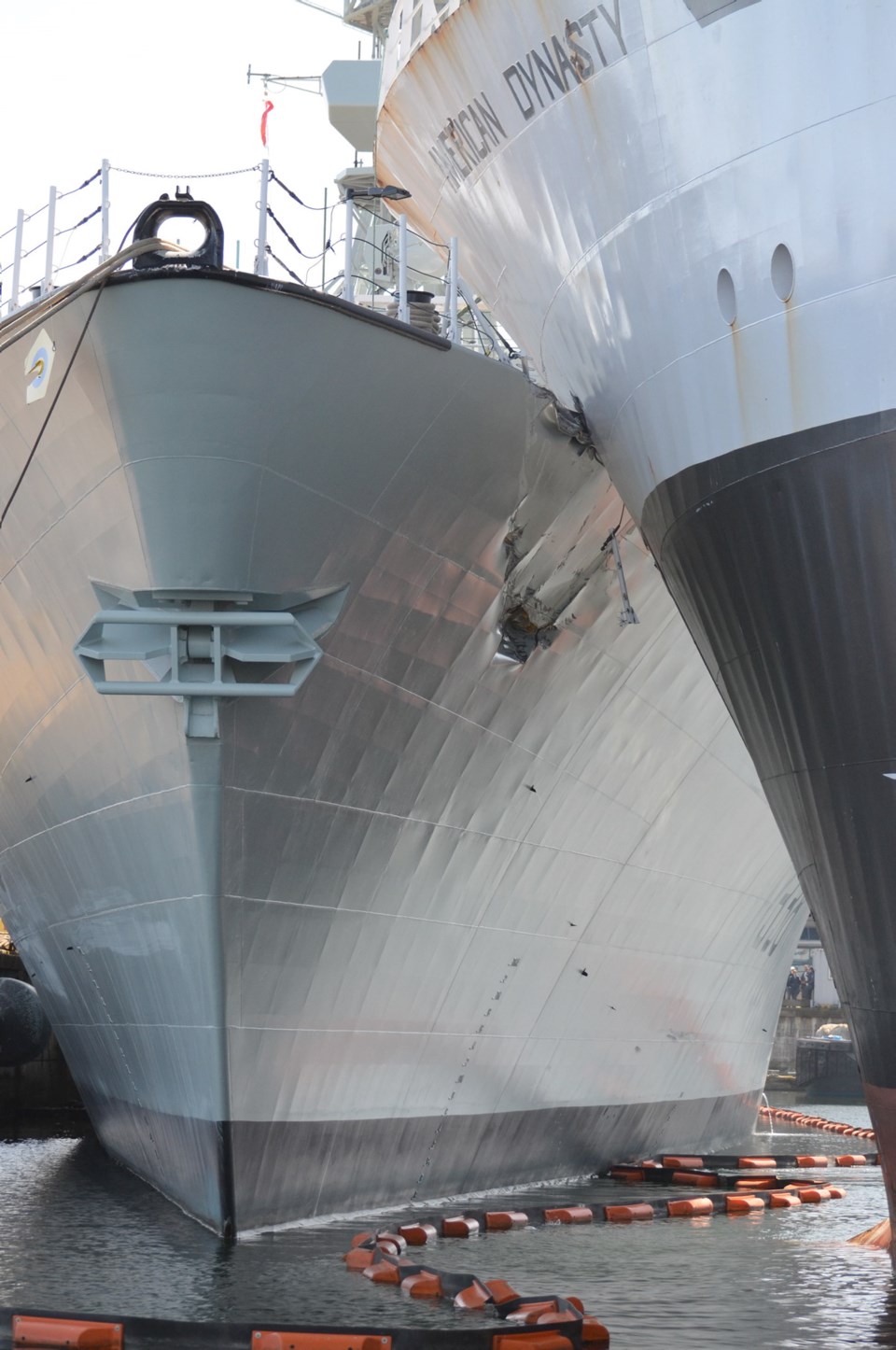Sudden, unexpected events — including an electrical blackout — occurred on a U.S. factory fishing trawler Tuesday, seconds before it struck HMCS Winnipeg, which was docked at CFB Esquimalt, Transportation Safety Board of Canada investigators have learned.
“There was a blackout and the next thing they knew was the American Dynasty sped up, turned to starboard and collided with HMCS Winnipeg,” said Raymond Mathew, manager of marine investigations for the safety board.
Near a CFB Esquimalt dock, the vessel accelerated from about two knots to eight, Mathew said Thursday. The electrical blackout shut down some systems, but even with backup power, the bridge crew had little time to react, he said, adding there was a distance of 350 metres between the two vessels when the engine surged to life.
“When the vessel did speed up, there was not even a minute [before the collision] … too little time to react to anything.”
American Dynasty couldn’t drop its anchors to slow its forward motion because they had been lashed to the vessel, a requirement for all ships entering a drydock. Accidental dropping of an anchor can damage the repair facility.
The collision left both vessels with significant damage, but no cost estimates have been released. The navy ship’s steel bow was crumpled while the bow of American Dynasty was split open.
Six employees of Victoria Shipyards working inside Winnipeg suffered minor injuries.
The 272-foot American Dynasty left Seattle on Tuesday morning with nine crew members. The ship picked up a B.C. marine pilot off Victoria, Mathew said, and headed to Victoria Shipyards for a refit.
At the mouth of Esquimalt Harbour, a dock pilot from the shipyard came on board while two tugs affixed lines to the bow and stern. Control of the bridge was then handed from the marine pilot to the dock pilot, Mathew said.
The vessel was going only about 1.5 to two knots as it approached CFB Esquimalt. The engines of American Dynasty were supposed to be shut down to prevent damage to the drydock, Mathew said.
The ship’s master gave control to the engine room so the one engine powering the vessel could be shut down. “When that happened, there was a blackout,” Mathew said.
Instead of shutting down, the engine roared to life. The vessel steered off course and into HMCS Winnipeg, where it was moored with other frigates at CFB Esquimalt.
“We don’t know why that happened,” Mathew said.
Safety board investigators interviewed most of American Dynasty’s crew, including the chief and second engineers who were in the engine room at the time.
Engine specialists were to begin analysis of the ship’s engine and related computer systems Thursday to learn what caused the sudden change in speed and direction, Mathew said.
The backup power systems should have allowed the crew to manoeuvre the vessel, even with reduced electrical power, he said.
Safety board investigators will look at all factors leading up to the collision, Mathew said. “We’ll be looking at [the vessel’s] certification, looking at what could have gone wrong at the bridge or down in the engine room.”
It’s too early to say if the mechanical failure had a human cause, he said.
This incident was unusual, Mathew said. “It’s just unfortunate [American Dynasty] went on to strike a naval vessel.”



